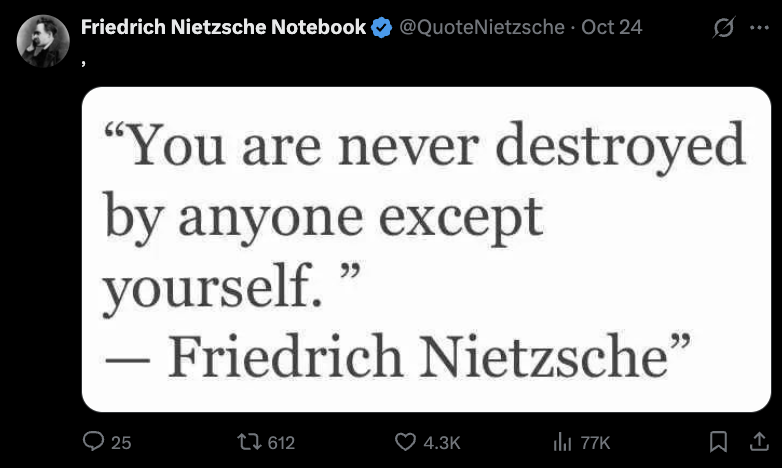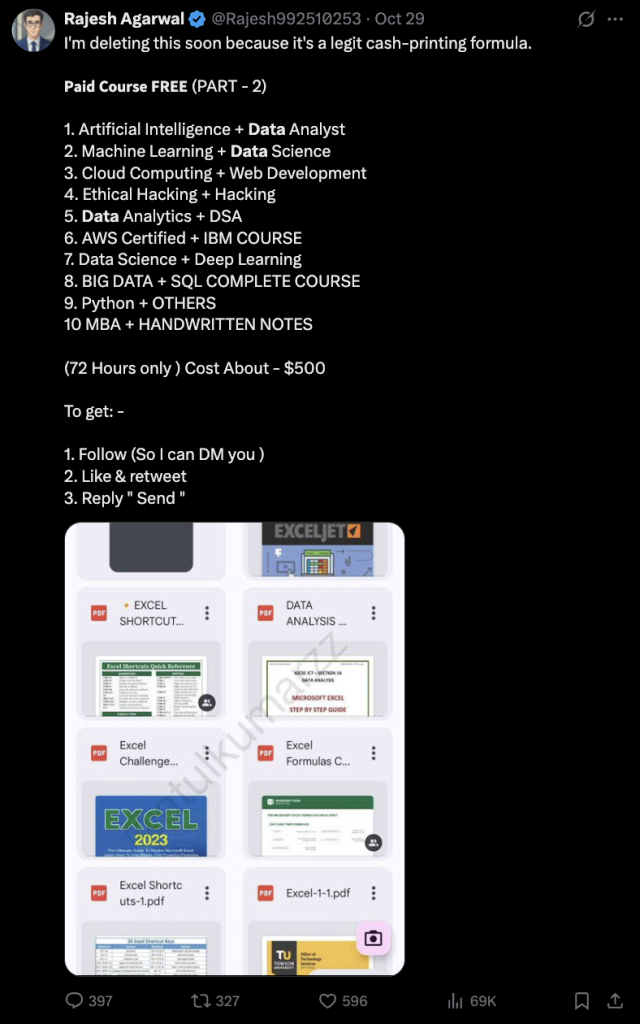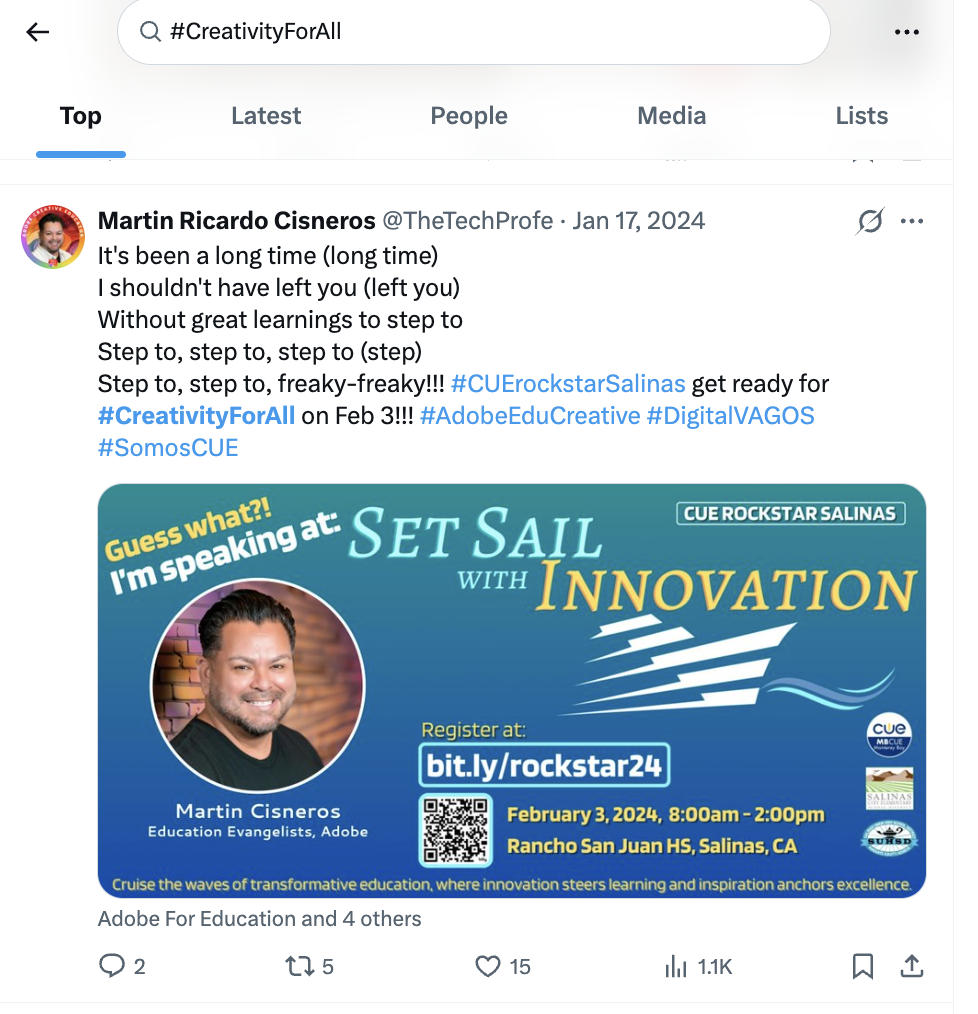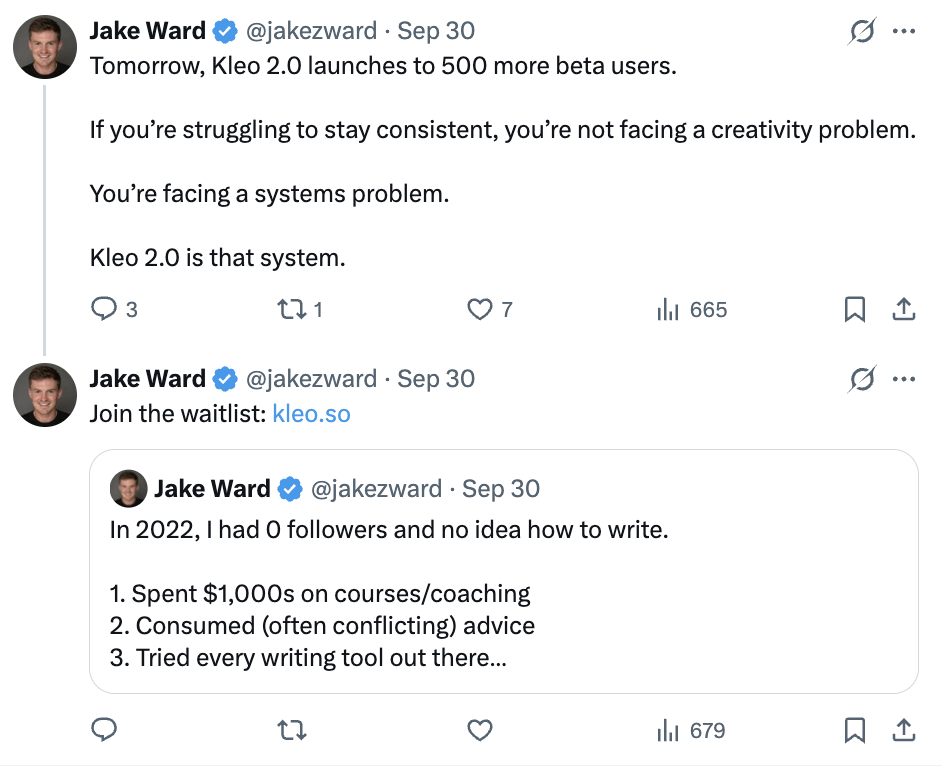If you want to grow your audience on Twitter (now X) and turn followers into customers or fans, you need to master the art of writing tweets.
Tweets may be short, but that doesn’t mean they’re easy to write. Every word counts.
The good news?
With a few smart strategies, you can write tweets that get seen, shared, and spark engagement that leads to real Twitter monetization opportunities.
This guide will show you exactly how to write a Tweet that gets attention, earns clicks, and builds your brand.
Things You Should Know
Before jumping into writing strategies, remember that the most successful Tweets share these qualities:
• Clear and easy to understand
• Short and scannable
• Eye-catching content like visuals, stats, or a strong hook
• A purpose: conversation, clicks, shares, replies, or saves
Your Tweets should either educate, entertain, inspire, or persuade. If your Tweet doesn’t do one of those things, it’s probably not hitting the mark.
Steps: How to Write a Tweet
Here are 11 proven ways to write Tweets that work extremely well for creators, entrepreneurs, and business accounts.
Ask a question.
One of the easiest ways to get more engagement on Twitter is to ask a question. Questions invite people into a conversation instead of just scrolling away.
When someone replies, the algorithm sees your post as active and pushes it to even more people.
This is especially powerful for creators and brands on X because it helps you understand your audience, learn what they want, and build community.
Choose simple, relatable questions that only take a few seconds to answer. Focus on curiosity, opinions, or personal choices. These are all the kinds of things people love to share.
Examples:
• “What’s one business tool you can’t live without?”
• “Creators: If you had to pick only 1 platform to monetize on… which one?”
Questions help your Tweet show up in more feeds since replies boost reach.
Create a compelling announcement.
Announcements naturally create excitement.
When you tell followers something is launching, changing, or coming soon, you tap into anticipation and curiosity: two powerful drivers of engagement on social media.
Brands often use announcements for products, updates, upcoming content, or special offers, to name a few.

Keep your announcement short and hype-driven, and then follow it with a clear next step (like “more tomorrow” or “join the waitlist”). This makes your followers want to stick around or take action as a result of your tweet.
Emojis are also a good idea because they catch the viewer’s eye and may make your post more relatable or fun.
Examples:
- “Big news tomorrow 👀 Stay tuned!”
- “We’re launching something creators are going to LOVE…”
- “New YouTube video drops at 3 PM: tips to double your Twitter impressions 🚀”
Share an impactful quote.
Quotes are highly shareable because they connect emotionally. They work great for motivation, inspiration, mindset, and storytelling.
A strong quote helps people feel seen, and when someone feels something, they’re more likely to engage, like, or repost.
You can use a quote from someone well-known, but original quotes perform even better because they’re fresh and unique to your voice.
Keep the message punchy and direct; it’s also a good idea to accompany the quote with some visual image or video, as tweets with these elements perform better.

The quote could even be a part of the rich media.
Examples:
- “You don’t need permission to start.”
- “Small progress is still progress.”
- “Post the content you’re scared to share.”
Namedrop other Twitter users.
Mentioning another user instantly expands your reach. When you tag someone, whether you’re praising their work or responding to their Twitter post, there’s a chance they’ll engage back or retweet you.
That exposes your content to their audience too, which is a win-win!
Great reasons to tag someone include:
- Giving credit
- Joining a discussion
- Sharing insights from someone else’s content
Just make sure your mention is relevant and respectful; tagging random people looks spammy.
Example: “Huge thanks to @User — their thread on productivity hacks changed my workflow!”
Grab your followers’ attention with an image, gif, or video.
Visual content performs better than plain text because it stops the scroll. Your image or video should support the message of the tweet, not distract from it.
Videos and gifs help show personality, while images can highlight key points or product features. It’s vital for users on Twitter, and rich media like these should be a big part of your Twitter content strategy.
Visual tweets help brands showcase what they do and help creators build familiarity and trust with their audience.

Examples:
- “My workspace transformation over the past year 👇” (+ photo carousel)
- “This tip alone boosted my engagement 10x 😳” (+ screenshot of analytics)
Ideas to include:
• Product screenshots
• Before/after images
• Quick how-to clips
• GIF reactions tied to your topic
Twitter’s algorithm often pushes tweets with visuals, so don’t get left behind. Days of words only are long gone.
Include a link.
Links can drive traffic to your website, newsletter, YouTube channel, store, or landing pages.
They are essential if you want to monetize your audience beyond Twitter.
However, links without context don’t convert well. You need a strong hook or benefit before the link: why should someone click? What’s in it for them?
Thus, you should use links in combination with some of the above strategies to help your tweet get the best performance possible.
Examples:
- “I just launched a free toolkit that helped me schedule content faster ➜ link”
- “Full guide on how I doubled my engagement: link inside 👇”
You’d want to have an image or video along with the tweet and the link so that it’s a well-rounded post.
Make your Tweets authoritative with numbers and statistics.
Numbers jump off the screen visually. They provide credibility and make your content feel more “expert,” which is important when you’re trying to establish authority or sell something.
Data-driven tweets often get saved or shared because people see them as resources, not just opinions.
Again, emojis are a great call to attention and make the tweet a bit more engaging.
Examples:
- “I gained 10,000 followers in 90 days. Here are the 5 changes I made 🧵👇”
- “82% of buyers trust online reviews more than ads — are you using them?”
Include a call to action in your Tweet.
A CTA tells people what you want them to do next: click, reply, follow, or share. Most people need a nudge.
When you clearly ask for engagement, you’ll get more of it. Everything you do should be clear and directive.
Creators often use CTAs to push growth and build relationships, or even direct users. Businesses use CTAs to drive conversions and leads.

Examples:
- “Reply with your goal — I’m cheering for you 👇”
- “Follow for more simple growth tips 🚀”
- “Retweet if you find this helpful 🔁”
Keep it short and sweet.
The most engaging tweets are often the simplest ones.
Twitter is a fast-moving platform since users scroll quickly and make split-second decisions about what’s worth reading.
If your tweet takes too long to process, most users will keep scrolling.
A short tweet forces you to focus on one clear message, which makes your writing stronger and easier to understand.
It also improves shareability; people are more likely to retweet something that’s punchy, relatable, and instantly digestible.
Aim for 100–120 characters or less when possible. This leaves space for retweets, quotes, and replies without cutting off text.
If you find yourself adding a second idea or explaining a concept too much, that’s a sign your tweet should become a thread instead.
Short tweets help you:
- Capture attention faster
- Boost engagement with little friction
- Make your message memorable
- Increase repost potential
Focus on direct language by removing filler words to get to the point.
Examples:
- “Done is better than perfect.”
- “Your habits decide your success.”
- “The only bad tweet is the one you didn’t post.”
- “Start small. Think big. Take action.”
Use a conversational tone.
Twitter isn’t (always) a place for corporate press releases; it’s a place where people come to joke around, learn something quick, and feel like they’re chatting with a real human.
If your tweets sound stiff or robotic, people will scroll right past them.
Writing in a conversational tone helps you feel more relatable, friendly, and trustworthy.
And when people feel connected to you, they respond more, which leads to more reach, more followers, and yes, more monetized impressions if you’re earning on X.
So keep it casual:
- Use simple, everyday language
- Write like you’re texting a friend
- Add personality: slang, humor, emojis are all OK. They are recommended!
- Say “you” more than “we” or “the company”
- Don’t overthink punctuation or grammar
If you read your tweet out loud, it should sound like your actual voice, not like a marketing brochure.
Brands who talk like real people win on Twitter. Creators who sound like humans build communities, not just follower counts.
Think: fun, friendly, and easy to read.
Examples:
- “Is it weird to already need a nap at 10 a.m.? Asking for me.”
- “If you’re working on your goals today, I’m proud of you ✨”
- “Okay, but why does posting consistently feel like a full-time job?? 😅”
- “Be honest: Did you actually drink enough water today?”
If it feels like a conversation, you’re doing it right.
Make use of hashtags to make your Tweets easier to find.

Hashtags on Twitter work like little discovery magnets. They help your tweets get seen by people who don’t already follow you. And if you’re trying to grow your Twitter? That’s huge.
When you add a hashtag like #MarketingTips or #MomLife, you’re basically putting your tweet into a topic folder.
Anyone searching or scrolling through that hashtag can come across your content. It’s one of the simplest ways to reach a wider audience, especially when you’re still building your following.
But here’s the key: Less is more.
Twitter isn’t IG, and dropping a paragraph of hashtags hurts engagement and looks spammy. You only need 1–2 relevant hashtags per tweet to make an impact.
Choose tags that reflect what the tweet is actually about. If you post about productivity but throw in #Crypto just because it’s trending, the algorithm will wrist slap you and may limit your tweet’s reach. Stay on topic.
You can use different types of hashtags depending on your goals:
- Niche hashtags to reach the right audience (#FreelancerLife)
- Community hashtags to join conversations (#WritersOfTwitter)
- Event or seasonal tags (#BlackFriday, #SummerVibes)
- Branded hashtags if you want people to tag their own posts (#MyBrandName)
Hashtags don’t replace good content, they just help the right eyes find it.
Pro tip: Before using a hashtag, search it. Check if the audience is active and aligned with your content. This is key!
Try threads for longer discussions or storytelling.
Sometimes you have too much to say for just one tweet, and that’s exactly where Twitter threads come in.
Threads let you break a bigger idea into smaller, easy-to-read parts that keep people scrolling your content instead of disappearing into someone else’s timeline.
Think of a thread like a mini blog post, but way more engaging. Each tweet keeps the story moving, each tweet gives value, and each tweet helps build trust.

And when people spend more time reading your content, the algorithm loves it, which means more reach and potentially more monetized impressions if you’re earning through X.
Threads are perfect for:
- Personal stories that teach a lesson
- How-to guides and tutorials
- “What I wish I knew sooner” style content
- Case studies and results
- Mistakes to avoid
- Industry insights or predictions
The magic is in the hook: that very first tweet. It needs to grab attention and make people think, “Okay, I need to read this.” Use curiosity, bold statements, or a clear promise of value.
Always end with a call-to-action like we mentioned above, asking readers to reply, like, repost, or follow you. People are much more likely to do something if you simply ask.
Examples:
- “I turned Twitter into a side income stream. Here are the 7 steps that actually worked 🧵👇”
- “I wasted years doing content wrong. If you want to grow faster, avoid these mistakes 🧵”
- “How I booked my first 10 clients from Twitter without spending a dollar on ads 🧵👇”
Bottom line: If a single tweet can’t hold all your brilliant ideas, thread it. You’ll keep people reading, learning, and engaging, and that’s exactly what leads to real growth.
Twitter Tips
Here’s a quick overview of all the action items you can add when learning your how to write a tweet strategy:
- Lead with a strong hook to grab attention instantly
- Tweet consistently (2–5 posts or interactions per day)
- Provide value more often than you promote
- Reply to comments to boost engagement and show you care
- Comment thoughtfully on other creators’ tweets daily
- Track performance using X Analytics and repeat what works
- Share personal wins, lessons, and relatable moments
- Join trends only when they fit your niche or message
- Use visuals (images, charts, embedded video, gifs, screenshots) to stop the scroll
- Mix tweet formats (questions, lists, threads, quotes, visuals)
- Focus on building community, not just follower count
- Remember to stay in line with Tweet limits
Business owners and creators who treat Twitter strategically see faster results and more monetization opportunities.
FAQs: How to Write a Tweet

Here is some quick insight into the most frequently asked questions about writing the best tweets.
How do you write a Tweet for beginners?
Start simple. Share one idea clearly. Add one call to action like “What do you think?” Then hit post. You’ll improve as you go.
Example: “Creators: What’s your #1 goal this month?”
What is an example of a good Tweet?
A good Tweet gets attention and engagement.
Example: “Most people quit right before they see results. Keep going.”
Short, inspirational, widely relatable = high performance against the Twitter algorithm.
How do you write Tweets?
Focus on clarity, creativity, and conversation. Every Tweet should have a purpose: either education, inspiration, or entertainment.
Ask yourself:
• Will this spark a reaction?
• Does this help my audience?
• Is this worth sharing?
If yes, tweet it.
What is the 4-1-1 rule on Twitter?
The 4-1-1 rule on Twitter helps you to develop a tweeting strategy. It explains that for every 6 tweets
• 4 should educate or entertain
• 1 should be personal engagement (reply, conversation)
• 1 can be promotional
This balance of 6 tweets keeps your content authentic while still allowing you to promote your brand or business
Final Thoughts: How to Write a Tweet
Learning how to write a Tweet is one of the best ways to grow your brand and monetize your presence on X.
Tweets that educate, engage, or entertain build stronger relationships and drive more clicks, replies, and revenue.
You don’t need to be a professional writer to succeed. Be clear. Be real. Share what you know. And most importantly, stay consistent!
The more you show up and the more you keep tweeting, the better you will get and the more followers you can grow.
With these 11 tips, you’re ready to create Tweets that stand out in the feed and push your business forward.


